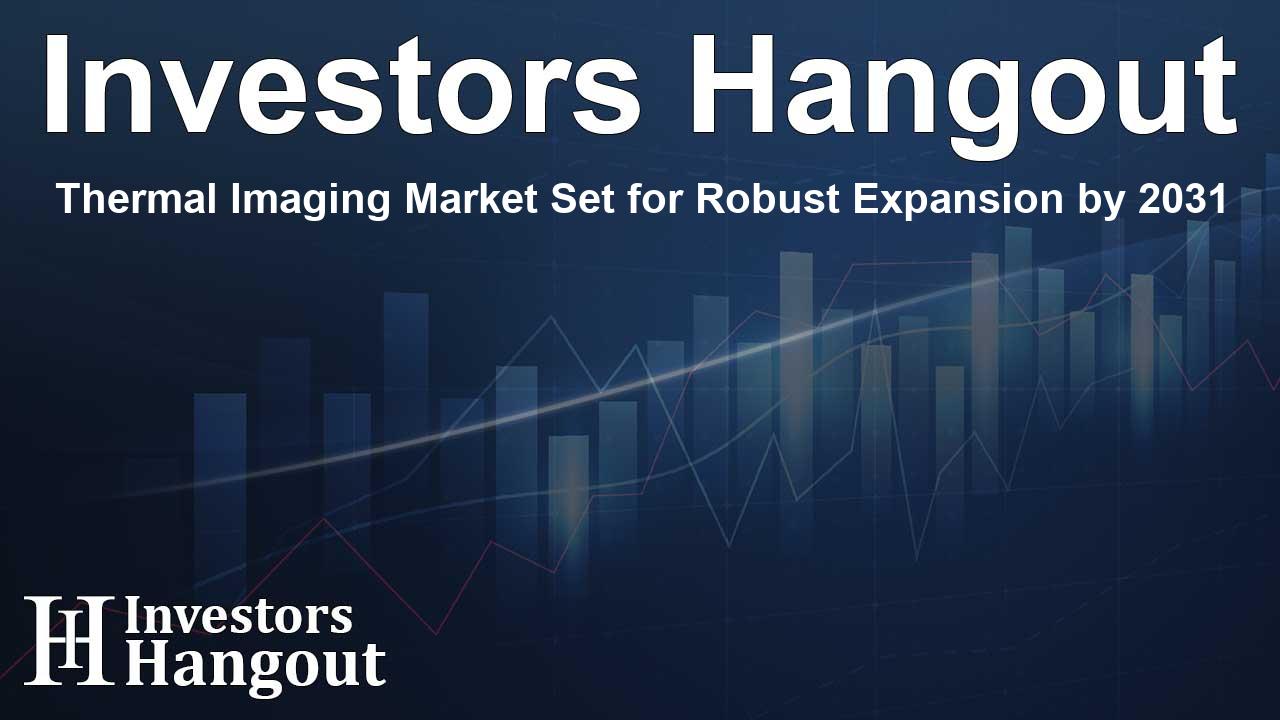Thermal Imaging Market Set for Robust Expansion by 2031

Exploring the Rapid Growth of the Thermal Imaging Market
The global thermal imaging market is on the brink of impressive growth, driven by technological advancements and increasing applications across various sectors. This market is characterized by the rise of thermal imaging solutions that are crucial for military applications, healthcare diagnostics, and other sectors, indicating a bright future ahead.
Current Trends and Future Opportunities
Recent analyses suggest that the thermal imaging market is projected to achieve a compound annual growth rate (CAGR) of 9.4% from now until 2031. This growth stems from the heightened demand for thermal cameras that now find applications in diverse fields such as building inspections, firefighting, and law enforcement, making them invaluable tools for professionals.
The Importance of Thermal Cameras in Today's Industries
Thermal cameras, also known as thermal imagers, serve as crucial equipment that detects temperature variations by gathering infrared radiation and converting this data into visual images. These devices are essential for spotting potential issues that may not be visible to the naked eye, enhancing safety and efficiency in numerous operations.
Military Applications
The defense sector is experiencing a transformation with the adoption of state-of-the-art thermal imaging technology. Modern militaries are upgrading their surveillance tools to include advanced thermal imaging devices that play a vital role in perimeter monitoring and automatic target recognition systems. Detecting motion and assessing threats in adverse weather conditions is a primary reason for the increasing reliance on thermal imaging in military operations.
Healthcare Innovations with Thermal Imaging
Thermal imaging is not only transforming the military landscape but is also making strides within the healthcare sector. This innovative technology facilitates non-invasive diagnostics, allowing healthcare professionals to detect infections and monitor conditions swiftly. From identifying fevers to evaluating injuries, thermal cameras are proving indispensable in medical environments.
Potential Developments in Healthcare
For instance, a notable advancement was made by USATherm, which obtained FDA approval for its second-generation thermal imaging device, ThermPix™, aimed at offering high-resolution thermal imaging for healthcare use. This promising technology can potentially change how diagnostic processes are managed, providing rapid screening capabilities that are crucial in today's clinical settings.
Geographical Market Insights
Analyzing the geographical landscape, North America has emerged as a dominant player in the thermal imaging market, driven by robust defense expenditures and technological advancements. Europe and Asia Pacific are also vital markets, with Asia Pacific expected to experience the highest growth rate during the forecast period.
Market Segmentation Overview
The thermal imaging market can be broadly segmented based on product types such as thermal cameras, modules, and scopes. Among these segments, thermal cameras are leading in market share, reflecting their widespread use across various industries and applications. Thermal imaging devices are further categorized by technology, such as cooled and uncooled systems, with the latter seeing significant adoption due to cost-effective benefits.
Key Players Shaping the Market
Several major players are competing in the thermal imaging space, including Flir Systems, Inc., Fluke Corporation, and Honeywell International, Inc. These companies are focusing on collaboration, product innovations, and expansion strategies to retain competitive advantages in the evolving market.
Conclusion: Navigating the Future of Thermal Imaging
In conclusion, the thermal imaging market is witnessing exceptional growth fueled by innovations and varied applications across different sectors. The demand for enhanced surveillance, healthcare diagnostics, and military technology indicates that thermal imaging will play a crucial role in the future. Companies must strategize their approach to harness the potential of this expanding market.
Frequently Asked Questions
What is the projected CAGR for the thermal imaging market?
The thermal imaging market is expected to achieve a CAGR of 9.4% from now until 2031.
How is thermal imaging used in the military?
Thermal imaging devices enhance surveillance and motion detection, crucial for perimeter security and threat assessment in military settings.
What recent advancements have been made in thermal imaging technology?
Recent advancements include the development of the ThermPix™ device by USATherm, offering high-resolution thermal imaging for healthcare applications.
Which regions are leading in the thermal imaging market?
North America currently leads the thermal imaging market, followed by Europe and Asia Pacific, with the latter expected to experience significant growth.
Who are the key players in the thermal imaging market?
Major players include Flir Systems, Fluke Corporation, and Honeywell International, among others, who are actively developing and launching new products.
About The Author
Contact Ryan Hughes privately here. Or send an email with ATTN: Ryan Hughes as the subject to contact@investorshangout.com.
About Investors Hangout
Investors Hangout is a leading online stock forum for financial discussion and learning, offering a wide range of free tools and resources. It draws in traders of all levels, who exchange market knowledge, investigate trading tactics, and keep an eye on industry developments in real time. Featuring financial articles, stock message boards, quotes, charts, company profiles, and live news updates. Through cooperative learning and a wealth of informational resources, it helps users from novices creating their first portfolios to experts honing their techniques. Join Investors Hangout today: https://investorshangout.com/
The content of this article is based on factual, publicly available information and does not represent legal, financial, or investment advice. Investors Hangout does not offer financial advice, and the author is not a licensed financial advisor. Consult a qualified advisor before making any financial or investment decisions based on this article. This article should not be considered advice to purchase, sell, or hold any securities or other investments. If any of the material provided here is inaccurate, please contact us for corrections.
